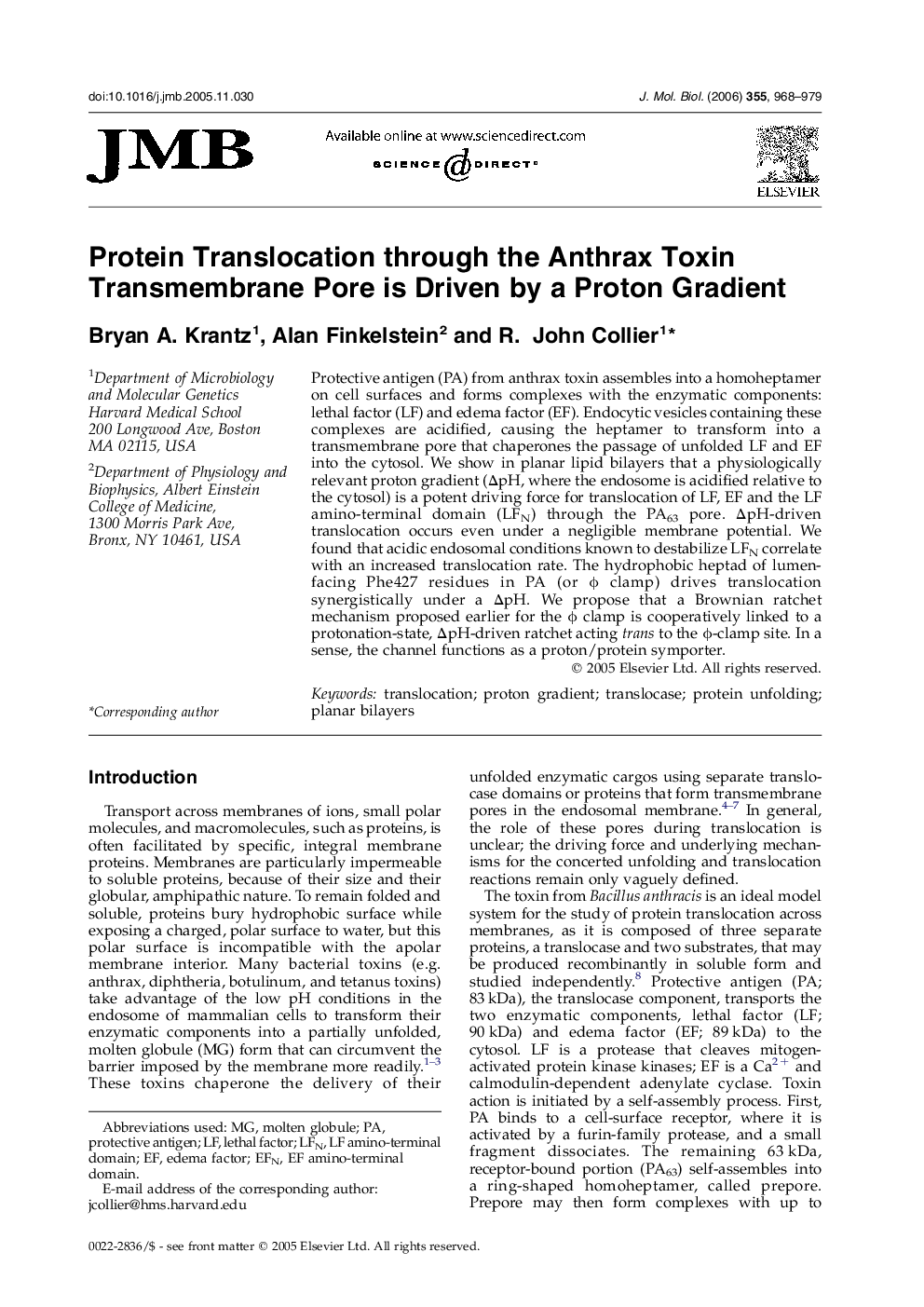| Article ID | Journal | Published Year | Pages | File Type |
|---|---|---|---|---|
| 2190008 | Journal of Molecular Biology | 2006 | 12 Pages |
Protective antigen (PA) from anthrax toxin assembles into a homoheptamer on cell surfaces and forms complexes with the enzymatic components: lethal factor (LF) and edema factor (EF). Endocytic vesicles containing these complexes are acidified, causing the heptamer to transform into a transmembrane pore that chaperones the passage of unfolded LF and EF into the cytosol. We show in planar lipid bilayers that a physiologically relevant proton gradient (ΔpH, where the endosome is acidified relative to the cytosol) is a potent driving force for translocation of LF, EF and the LF amino-terminal domain (LFN) through the PA63 pore. ΔpH-driven translocation occurs even under a negligible membrane potential. We found that acidic endosomal conditions known to destabilize LFN correlate with an increased translocation rate. The hydrophobic heptad of lumen-facing Phe427 residues in PA (or ϕ clamp) drives translocation synergistically under a ΔpH. We propose that a Brownian ratchet mechanism proposed earlier for the ϕ clamp is cooperatively linked to a protonation-state, ΔpH-driven ratchet acting trans to the ϕ-clamp site. In a sense, the channel functions as a proton/protein symporter.
